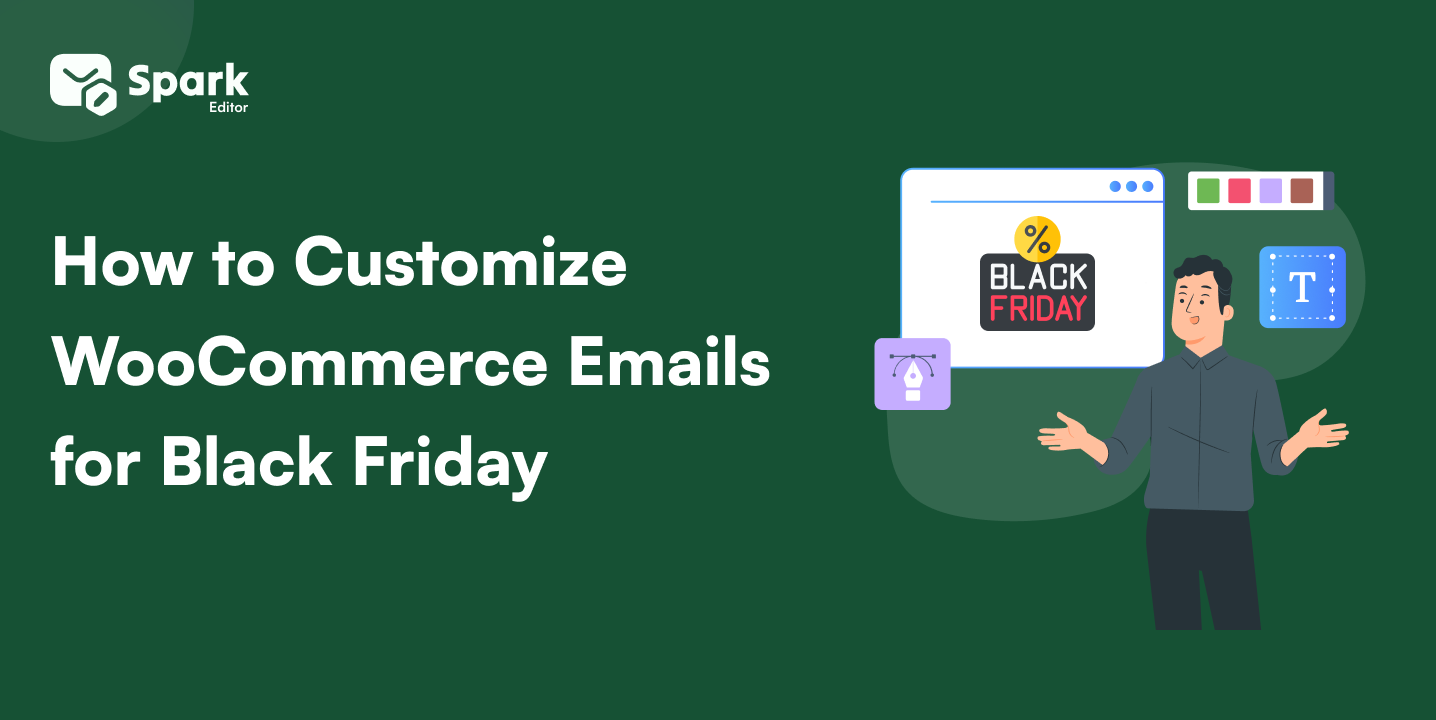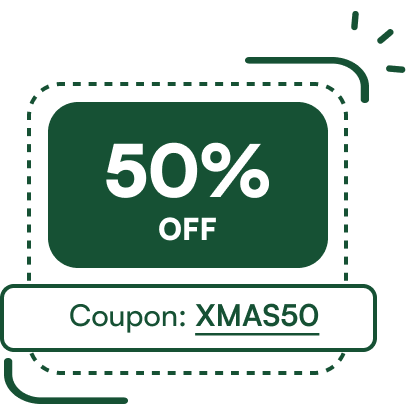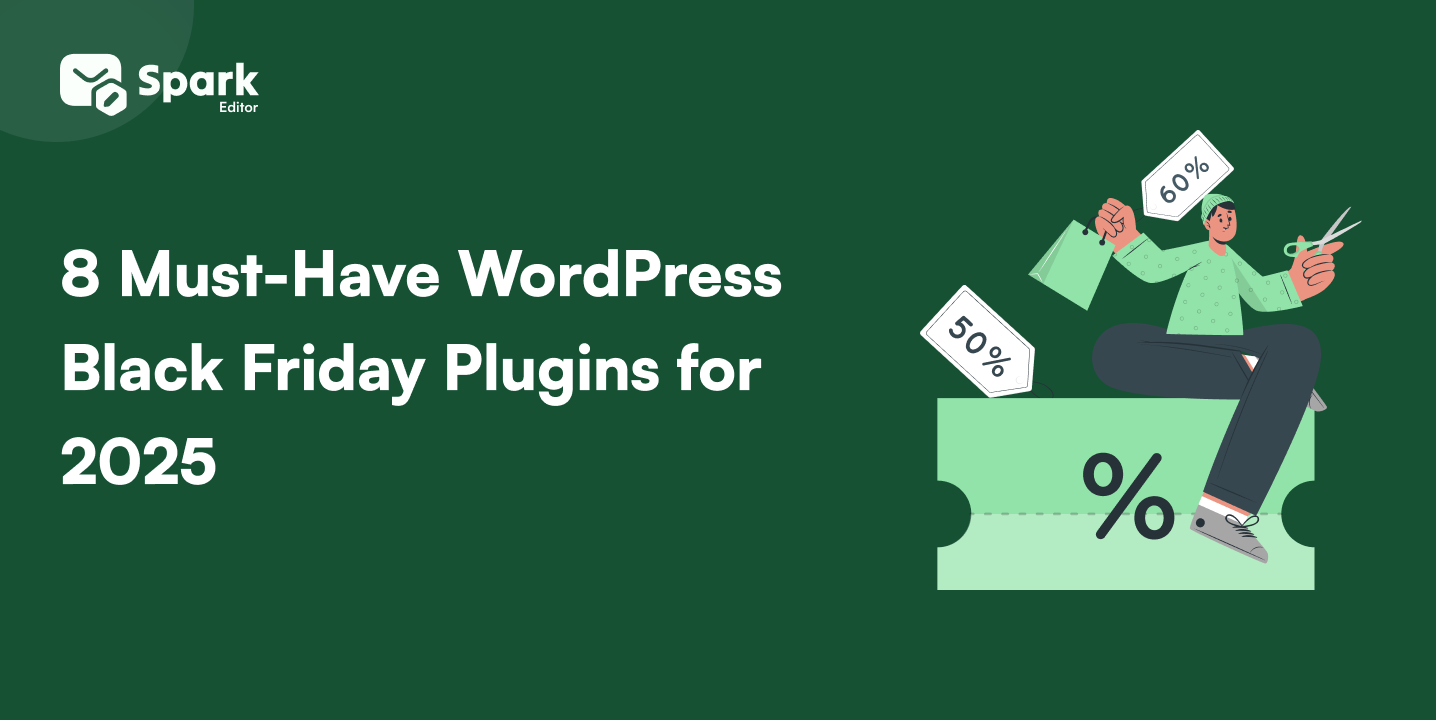Are you maximizing the ROI of your custom WooCommerce emails? In today’s competitive eCommerce landscape, personalized WooCommerce emails are essential for boosting engagement and driving sales.
Generic, one-size-fits-all emails simply don’t cut it anymore. With personalized content tailored to your customers’ behavior and preferences, you can increase open rates, click-through rates, and ultimately, conversions.
Ready to take your WooCommerce email marketing to the next level? From A/B testing to dynamic content, this guide explores how personalization can skyrocket your sales.
Let’s dive into proven strategies for leveraging WooCommerce email marketing and boosting your ROI!
What is the ROI of Custom WooCommerce Emails?
The ROI of custom WooCommerce emails refers to the financial benefits gained from investing in personalized email marketing efforts. Unlike generic emails, custom emails that are tailored to the recipient can lead to higher open rates, increased click-through rates, and better conversion rates.
As a result, this translates to more sales and a higher return on the resources invested in email marketing. Moreover, with the right tools, such as Spark Email Editor, creating and sending personalized emails becomes a seamless process that drives measurable results.
Strategies for Maximizing ROI with Custom WooCommerce Emails
To maximize the ROI of your custom WooCommerce emails, consider the following strategies:
- Segment Your Audience: Group your customers based on factors like purchase history, browsing behavior, and demographics. This allows you to send more targeted emails that resonate with each segment.
- Use Clear CTAs: Ensure that each email includes a clear call-to-action (CTA). This will guide the recipient toward the desired action, whether it’s making a purchase, signing up for a newsletter, or following your brand on social media.
- A/B Testing: Regularly test different versions of your emails to see which ones perform better. Experiment with subject lines, email content, and CTAs to optimize your emails for higher engagement.
- Personalize Subject Lines: Personalize your subject lines to increase open rates. A subject line that addresses the recipient by name or references a recent purchase can grab attention and encourage them to open the email.
- Monitor and Adjust: Use the analytics tools in Spark Editor to monitor the performance of your emails. Pay attention to metrics like open rates, click-through rates, and conversions, and adjust your strategy based on the data.
Want to turn your order emails into a sales-boosting machine? Discover how custom WooCommerce order emails can drive more conversions effortlessly!
How Personalization in WooCommerce Emails Drives Sales
Personalization in WooCommerce emails is a powerful tool for driving sales. When customers receive emails that are relevant to their interests, they are more likely to engage with the content. For instance, personalized product recommendations based on past purchases or browsing behavior can prompt customers to make additional purchases.
Moreover, personalized discounts and special offers can incentivize repeat business, further increasing your store’s revenue.
Customizing your emails to reflect your brand’s unique voice and style also helps in building a strong relationship with your customers. As a result, this connection fosters loyalty, which makes customers more likely to choose your store over competitors.
Enhance your store’s communication with WooCommerce Email Layouts—designed for clarity, branding, and engagement.
Benefits of Using Spark Email Editor for Email Personalization
Spark Email Editor is an essential tool for any WooCommerce store looking to leverage the power of personalized emails. Here’s how it can help:
- Pre-Built Email Templates: Spark offers a variety of pre-built templates that are easily customizable to match your brand’s aesthetic. This saves time and ensures consistency in your email communications.
- Drag-and-Drop Editor: The intuitive drag-and-drop editor allows you to create personalized emails without any coding knowledge. Customize everything from fonts and colors to images and layouts.
- Dynamic Content: With Spark Email Editor, you can include dynamic content that personalizes each email based on the recipient’s behavior, such as their name, order details..
- Mobile Compatibility: Emails designed with Spark Email Editor are fully responsive, ensuring that they look great on any device, which is crucial for reaching customers who shop on their mobile phones.
Enhance Engagement with Dynamic Content in Spark Email Editor.
How to Measure the Success of Personalized WooCommerce Emails
Measuring the success of your personalized WooCommerce emails is crucial for understanding their impact on your sales and overall ROI. In addition, it helps you refine your strategies for even better results. Key metrics to track include:
- Open Rates: This indicates how many recipients are opening your emails. A higher open rate suggests that your subject lines and sending times are effective.
- Click-Through Rates (CTR): CTR measures how many recipients clicked on links within your emails. High CTRs indicate that your content and CTAs are engaging.
- Conversion Rates: This metric tracks the percentage of recipients who completed a desired action, such as making a purchase, after interacting with your email.
- Bounce Rates: Monitoring bounce rates helps you identify issues with email deliverability. High bounce rates may indicate that your email list needs cleaning or that there are technical issues with your emails.
- Unsubscribe Rates: Keep an eye on unsubscribe rates to ensure your emails are not overwhelming or irrelevant to your audience.
Looking for free tools to customize your WooCommerce emails? Discover the best options in our guide on the Top 5 Free WooCommerce Email Customizer Plugins!
Increase ROI with Pre-Built Templates in Spark Email Editor.
Final Thoughts
The ROI of custom WooCommerce emails is undeniable when you embrace personalization. By segmenting your audience, optimizing your email designs, and leveraging tools like Spark Email Editor, you can create highly effective campaigns that drive sales and customer loyalty.
Don’t forget to monitor your results and refine your strategy with A/B testing and dynamic content. The power of personalized emails lies in their ability to engage and convert, ensuring long-term success for your WooCommerce store.
Start personalizing today and watch your email marketing efforts deliver measurable returns!
Frequently Asked Questions
What is the ROI of custom WooCommerce emails? The ROI of custom WooCommerce emails refers to the financial returns gained from personalized email marketing, including increased sales, higher customer retention, and improved engagement.
How does personalization in WooCommerce emails drive sales? Personalization in WooCommerce emails drives sales by delivering relevant content tailored to customer preferences, boosting engagement, encouraging purchases, and enhancing satisfaction.
How can Spark Email Editor help personalize WooCommerce emails? Spark offers features like pre-built templates, a drag-and-drop editor, and dynamic content integration, making it easy to create personalized, on-brand emails that resonate with your customers.
What metrics should I track to measure the success of personalized emails? Track open rates, click-through rates, conversion rates, bounce rates, and unsubscribe rates to measure the success of your personalized email campaigns and optimize performance.
How often should I send personalized emails to my customers? Personalized emails should be sent based on customer actions (purchases, cart abandonment) and occasional personalized newsletters. Monitor engagement to adjust frequency and avoid inbox fatigue.
Can personalization help with customer re-engagement for inactive subscribers? Yes, personalization can help re-engage inactive subscribers. Targeted reactivation campaigns with personalized offers or content based on past interactions can bring them back to your brand.





